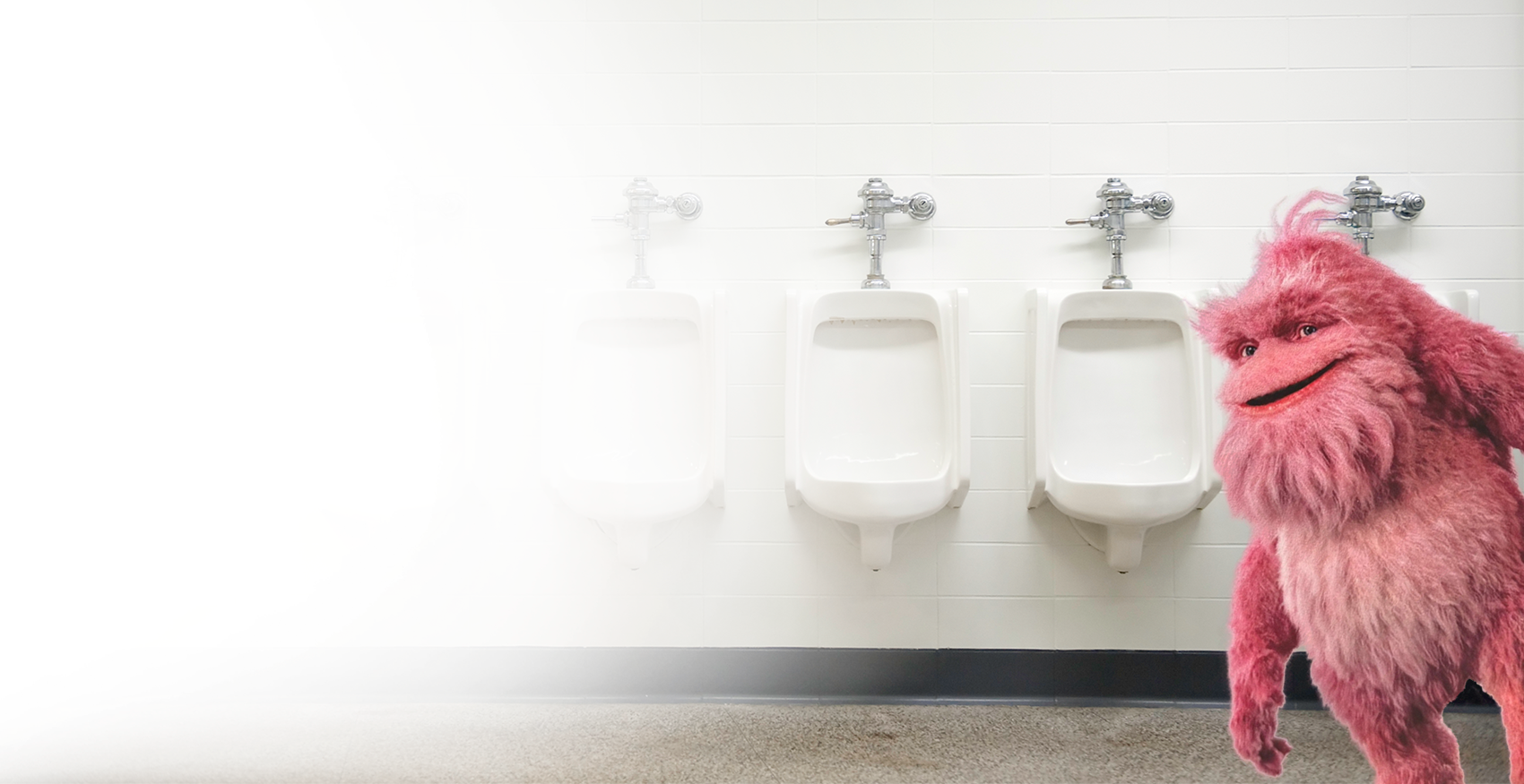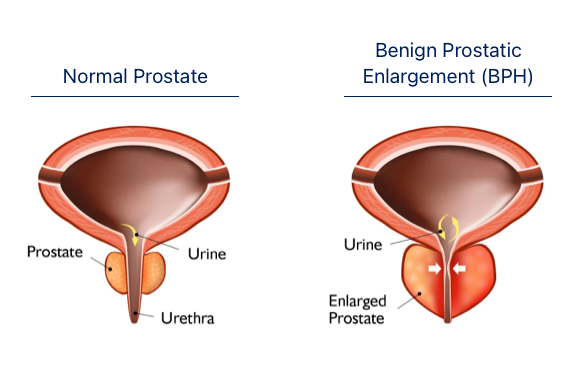
What Is BPH?
Benign prostatic hyperplasia (BPH), also known as enlarged prostate, is a very common condition for men over age 45. It is benign—not related to prostate cancer—but typically worsens over time and can directly affect your quality of life.
Million men worldwide have BPH1,2
Of men in their 50s have BPH
Of men in their 60s have BPH
What Is BPH?
Benign Prostatic Hyperplasia (BPH) is also known as enlarged prostate. It is a condition in which the prostate enlarges as men age.
As the prostate enlarges, it can squeeze the urethra and block urine flow. This can cause symptoms including a frequent and urgent need to urinate, a weak or intermittent stream and a sense that the bladder is not completely empty.3,4
In more serious cases, it can cause urinary retention (inability to urinate) and may lead to worse problems, including permanent bladder damage.5
Watch this short video about enlarged prostate
The Importance of Your Prostate
Many men understand the function of their prostate, but may not be aware of how it can impact their lives over time.
The prostate is a small gland, about the size and shape of a walnut, located below the neck of the bladder. It is a male reproductive organ that makes fluid for semen.
Urine flows out of the body through the urethra, which runs through the center of the prostate, from the bladder through the penis. When the prostate is enlarged, it can block the bladder. It's all connected!
If you think you might have BPH, don't hesitate to see your urologist for a diagnostic exam. Early intervention is important to ensure urine can flow easily and your bladder can be fully emptied.


Common Symptoms of BPH3,4
- Frequent need to urinate, day and night
- Urgent feeling of needing to urinate
- Difficulty or delay in starting urination
- Weak or slow urinary stream
- A sense that you cannot completely empty your bladder
- A urinary stream that stops and starts
What if I do nothing?
If left untreated, BPH may lead to:
- Worsening lower urinary tract symptoms (LUTS)
- Permanent bladder damage5
- Inability to urinate, requiring use of a catheter6
It may be time to ask about treatment options
If you suffer from these symptoms, you are not alone. BPH is the leading reason men visit a urologist.7 Don't hesitate to ask your doctor for a diagnostic evaluation to assess your lower urinary tract health.
If you have BPH, the good news is that the condition is generally treatable. Treatment options include medications, minimally invasive procedures like the UroLift System™, and traditional surgery. Talk with your urologist about which treatment options are best for you.
Your Score and More
Get the Free App
Get your detailed MyBPH report with BPH Advisor™ and learn more about treatment options. Get the app or visit BPHAdvisor.com today.
Read the BPH Blog
Check out these helpful articles on BPH and related topics.
Find a Physician
Search for UroLift-trained physicians in your area.
References
1. Berry, J Urol 1984.
2. US Census Bureau international database worldwide population estimates for 2022.
3. Rosenberg, Int J Clin Pract 2007
4. Vuichoud, Can J Urol 2015
5. Tubaro, Drugs Aging 2003
6. AUA BPH Guidelines 2021
7. IMS Health NDTI Urology Specialty Profile, July 2012 - June 2013
MAC11000-01 Rev A